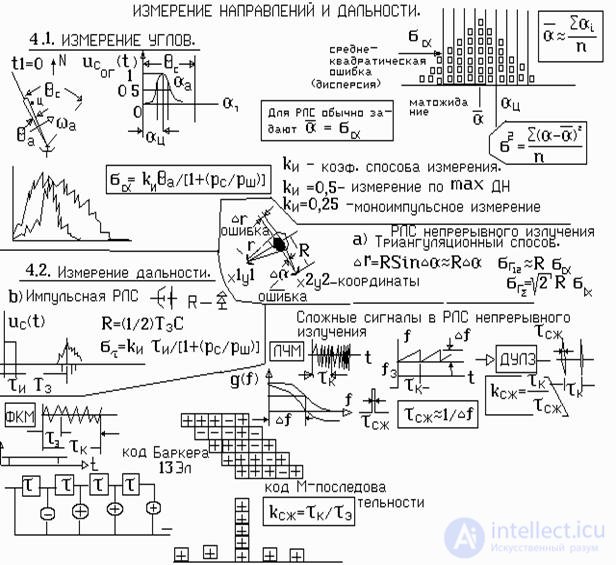
The signal reflected from the target is accompanied by interference. Therefore, measurement errors occur. The distribution of errors is random.
Inaccuracy of manufacturing equipment creates additionally both random and systematic errors.
The material of the lecture provides a physical interpretation of the formation of errors and their calculation.
In the simplest case, the measurement of the direction to the target is made according to the maximum of the reflected signal. The maximum appears when the maximum of the antenna pattern (DND) passes over the target. If the BOTTOM is narrow, then the determination accuracy will be high. However , it is difficult to determine the maximum signal at a high noise level, especially if it is done by a person. Devices make it more accurate.
Thus, the accuracy of determining the direction to the target depends on the width of the beam, the signal / noise ratio and the method of measurement.
The figure shows how errors occur. Practical measurements of direction form
statistical array. Its processing will allow to find the expectation a and error variance s a . For known true direction on target a and and expectation a according to the results of practical measurements, we find a systematic error a - a and .
The figure shows an empirical formula relating the magnitude of the random error s a with a DND width a a and the signal-to-noise ratio for power.


Comments
To leave a comment
Radio Engineering Systems
Terms: Radio Engineering Systems